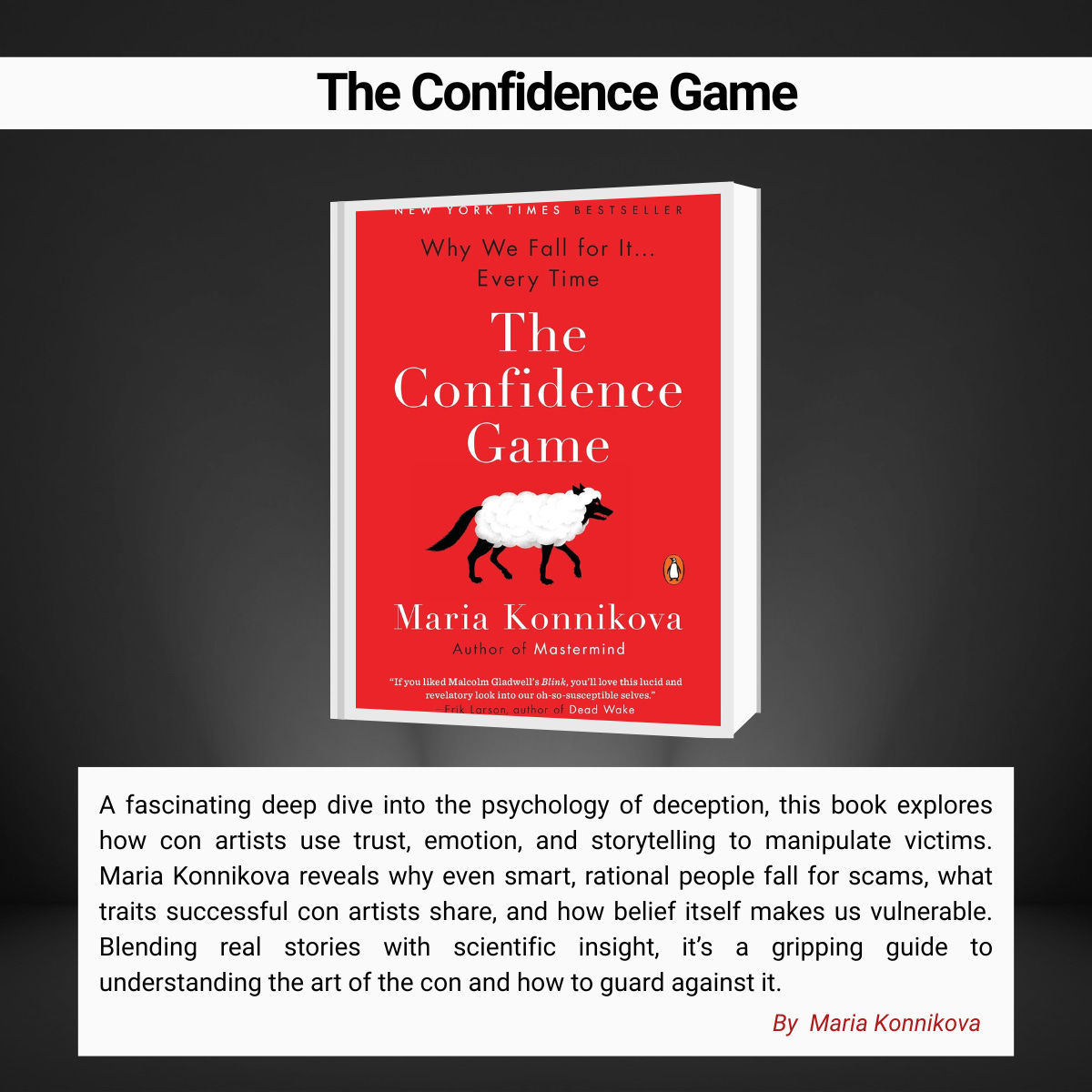The Confidence Game
A compelling look into the psychology of scams, this book explores why we trust con artists, how they exploit belief, and why even smart people fall for their tricks again and again.
In this edition of Cyber Book Club, we’re diving into The Confidence Game by Maria Konnikova, a gripping exploration of how and why con artists manipulate human trust. Blending psychology and investigative journalism, Konnikova examines not just the cons themselves, but the deep psychological forces that allow them to work.
From Ponzi schemes and cult leaders to fake psychics and charming imposters, the book unpacks what all successful scams have in common. Konnikova shows us that it’s not just gullible people who fall for cons, it's all of us, because belief is human. She explains how con artists exploit universal traits like optimism, trust, and the desire for connection.
Through real stories and scientific insight, the book explores the stages of a con, the traits of a successful scammer, and the emotional and cognitive patterns that make even the smartest among us vulnerable. It’s an essential read for anyone interested in the mechanics of deception.
What You Will Learn
The psychological profile of a con artist
Why intelligent, rational people fall for scams
The emotional stages of being conned
How belief, trust, and storytelling are exploited
What all successful cons have in common
Who This Book Is For
This book is ideal for:
Anyone interested in psychology, trust, and deception
Victims or observers of scams looking for insight
Professionals in cybersecurity, finance, or law enforcement
Readers fascinated by true crime and human behavior
Whether you're protecting others or examining your own susceptibility, The Confidence Game gives you the tools to understand how con artists operate, and why we let them.
Table of Contents
Introduction: The Art of the Con
The Grifter’s Profile
The Power of Belief
Setting the Stage: How Cons Begin
The Emotional Hook
The Play and the Payoff
The Denouement: Getting Away with It
Why We Blame the Victim
How to Spot a Con (and Still Get Fooled)
Belief, Doubt, and the Stories We Tell





